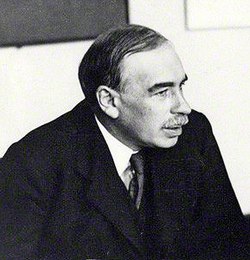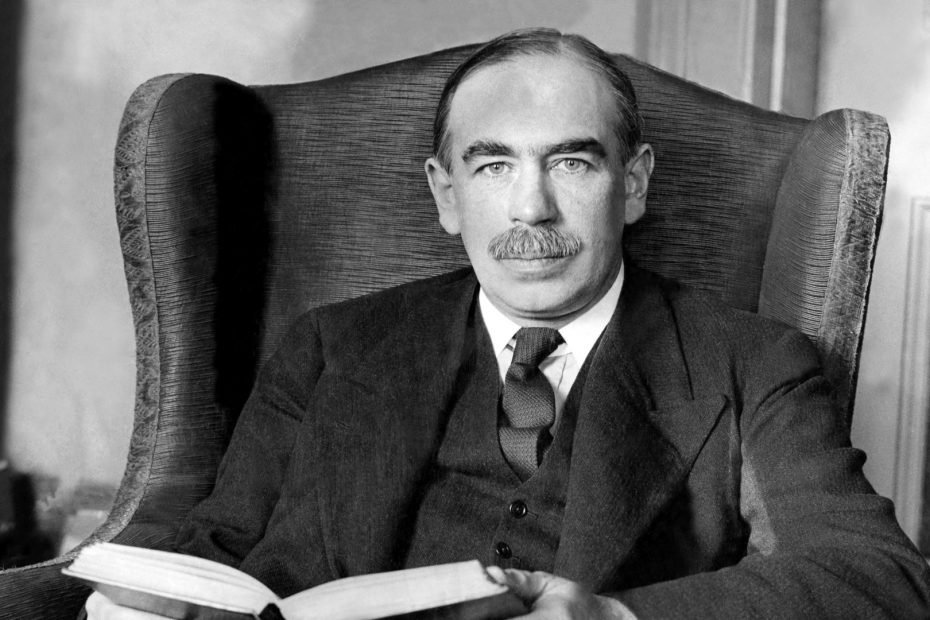Do you have an interest in economics? Are you curious about the economic theories that are shaping our world?
If so, then you’ve come to the right place. This blog post will briefly overview the Keynesian Revolution and how it has impacted modern economics.
The Keynesian Revolution: A Fundamental Reworking of Economic Theory
The Keynesian Revolution was a major shift in how economists thought about economic theory. The British economist John Maynard Keynes was the most famous proponent of this new school of thought.

Keynes sought to address the problem of Britain’s growing unemployment and proposed a new set of principles called the General Theory. This theory argues that governments should intervene in the economy to stimulate demand and create jobs.
He also advocated for government spending and taxation policies that could help reduce the economic cycle. The ideas put forward by Keynes had a profound impact on economic theory and its application to policymaking.
David Laidler’s book, Fabricating the Keynesian Revolution, provides an insightful look into the development of Keynes’s ideas and their influence on economics.
John Maynard Keynes and the Problem of Britain’s Unemployment
John Maynard Keynes is one of the most influential economists in history. His work, particularly his General Theory of Employment, Interest, and Money, played a pivotal role in the development of modern economic theory.
In the 1920s, Keynes began to focus on the problem of Britain’s unemployment. It had remained stuck around 10 percent since the end of World War I, and he argued that inadequate overall demand could lead to prolonged periods of high unemployment. He proposed government intervention in the form of fiscal policy to increase aggregate demand and reduce unemployment.
Keynes’s ideas took a dramatic shift as unemployment in Britain dragged on during the interwar period, reaching levels as high as 20 percent. Keynes argued that wage cuts would not necessarily cure unemployment and that government intervention was necessary to decrease unemployment—even if it meant a budget deficit.
This revolutionary idea at the time became known as the Keynesian Revolution. This fundamental reworking of economic theory fundamentally changed how economists viewed employment levels in the overall economy and have had a lasting impact on economic theory to this day.
The Impact of Keynes’s General Theory on Economics
The impact of Keynes’s General Theory of Employment, Interest, and Money was far-reaching. Not only did it become the dominant economic theory in the decades that followed, but it also profoundly affected the way economists view the world today. By overturning the then-prevailing idea that free markets would always resolve economic problems, Keynes changed how economists think about macroeconomics, fiscal policy, and government intervention.
Keynesian economics is now seen as the most influential school of economic thought in modern times. The General Theory’s core beliefs center around the idea that changes in total spending can affect economic output, inflation, and employment levels.
This means that governments can use fiscal policy to stimulate demand and keep economies from falling into long-term slumps. Keynesian economics suggests that increases in government spending, tax cuts, and monetary expansion can be used to counteract recessions or depressions.
The influence of Keynesian economics was so strong that it was almost impossible to find any alternatives for many years. The period following World War II saw a surge in Keynesianism, with governments worldwide using fiscal policy to manage their economies. The concept of national income analysis was widely adopted and became a cornerstone of macroeconomic theory.
Today, while Keynesian economics is still widely accepted, there is much debate over its efficacy and relevance in a post-2008 global economy. Nevertheless, it remains a powerful tool for economists and governments alike, giving them the tools they need to understand how fiscal policy can be used to manage their economies.
David Laidler’s Fabricating the Keynesian Revolution
David Laidler’s Fabricating the Keynesian Revolution is an important work that examines the emergence of macroeconomics in the interwar years. The book looks at the writings of numerous economists during this period and argues that the so-called “Keynesian Revolution” was, in fact, more of a myth than a revolution.
Laidler argues that the ideas which came to be associated with the “Keynesian Revolution” had been around for some time before Keynes and that Keynes merely provided a way of looking at these ideas in a new light.
This has led some to argue that Keynes’s General Theory was not so revolutionary as evolutionary. Nonetheless, Laidler’s work highlights the importance of Keynes’s contribution to economics and his impact on how we view economic theory today.
The Core Beliefs of the Keynesian Revolution
The core beliefs of the Keynesian Revolution revolve around the idea that aggregate demand is influenced by a host of economic decisions—both public and private—and can often behave erratically.
Keynesian economics, as developed by John Maynard Keynes, focuses on total spending and its effects on output and inflation. According to Keynes, uncertainty caused individuals and businesses to stop spending and investing. Thus, the government must invest money to get the economy back on track.
Keynesian economists believe that consumer demand is the primary driving force in an economy, so the theory supports the expansionary fiscal policy to increase employment levels. The theory is highly criticized by classical economists who believe in a laissez-faire approach to economics and argue that government intervention is unnecessary and can be counterproductive.
Nevertheless, the impact of the Keynesian Revolution has been immense. It has shaped economic policy since the end of World War II and provided a useful framework for understanding how economies work in the modern world. By examining the core principles of Keynes’s General Theory, we can gain insight into the kind of economic policies that have been successful in times of recession or stagnation.
The Influence of the Keynesian Revolution on Post-WWII Economics
The influence of the Keynesian Revolution on post-WWII economics was profound. The post-war consensus in economic thought was based on the premise that government intervention was essential to achieve full employment and economic stability.
Fiscal policies such as government spending and taxation were used to stimulate growth and increase employment. Keynesian economics also influenced the formation of the Bretton Woods system, which established a global monetary framework linked to the US dollar. This system helped to stabilize global exchange rates and facilitate international trade.
The Keynesian Revolution also had an impact on the wider political landscape. It challenged traditional assumptions about the role of government in society and provided intellectual support for the welfare state.
In addition, it encouraged governments to use fiscal policy to manage economic cycles, including recessions and inflation. The influence of the Keynesian Revolution was so pervasive that it was dubbed “the new orthodoxy” by some economists in the 1950s and 60s. Its prestige peaked in the 1960s, but its legacy still exists today in many aspects of public policy.
Keynes vs. Classical Economists
The disagreement between classical and Keynesian economics can be summarized by the difference in their labor market models. Classical economists believed wages were determined by supply and demand, and if workers had to accept lower wages due to a recession, employment would eventually rebound.
Keynesian economists, on the other hand, argued that wages were sticky and not easily adjusted. If workers were unwilling to accept wage cuts, it could lead to an extended period of unemployment. As a result, Keynesians argued that government intervention was necessary to boost the economy through fiscal policy.
Keynesian Economics and Fiscal Policy
Keynesian economics and fiscal policy are interlinked, as Keynesian economic theory advocates for the expansionary use of government spending and taxation. Fiscal policy uses government spending, taxation, or transfer payments to influence economic activity. It is a key factor in determining an economy’s overall level of aggregate demand.
During the Great Depression of the 1930s, Keynes argued that the solution to mass unemployment depended on more, not less, government spending. He proposed that by increasing spending and reducing taxes, the government could stimulate economic activity, increase demand and reduce unemployment. This idea was widely accepted by governments worldwide, leading to a shift in an economic theory known as the Keynesian Revolution.
Implementing fiscal policy aligned with Keynesian economics has been successful in many cases. For example, following World War II, fiscal policy stimulated economic growth and reduced unemployment levels in many countries. The success of this approach has led to Keynesian economics remaining a cornerstone of modern macroeconomic theory.
Learning from the Keynesian Revolution
The Keynesian Revolution has much to teach us today despite its flaws. One of the central lessons of Keynesian economics is that economic instability, such as recessions and depressions, is not inevitable.
Such events can be addressed with targeted fiscal policies. Additionally, the Keynesian Revolution challenged the idea that markets are automated and efficient and argued that government intervention and regulation of the economy are necessary to ensure overall economic health.
Finally, the Keynesian Revolution strongly emphasizes aggregate demand and its importance in driving economic growth. All these lessons remain relevant today as governments worldwide grapple with economic uncertainty and strive to promote economic growth.
The Relevance of the Keynesian Revolution Today
The Keynesian Revolution remains an important part of modern economic theory and is still relevant to today’s economies.
Although the Revolution focused largely on the British economy, its principles apply to other economies worldwidetance; Keynesian economics can help governments understand how to manage demand in their economies, which can be a powerful tool for reducing unemployment and achieving economic growth.
Keynesian economists have also advocated for government policies that consider the impact of changes in aggregate demand on the economy, such as using tax cuts or increased government spending to stimulate demand during recessions.
In addition, Keynesian economics has been used to understand the effects of inflation and how governments can manage it. By understanding how rising prices can reduce consumer spending and how inflation can reduce people’s purchasing power, governments can take steps to keep inflation in check.
In recent years, Keynesian economists have also taken a closer look at income inequality and its effects on economic growth. By understanding the impact of income inequality on purchasing power, governments can take steps to reduce inequality and ensure that everyone has access to economic opportunities.
The legacy of the Keynesian Revolution is still felt today. The principles of Keynesian economics form the basis of macroeconomic theory and continue to be used by governments around the world to understand how various policies will affect their economies. As such, understanding the impact of the Keynesian Revolution is essential for making informed decisions about economic policy in today’s world.
